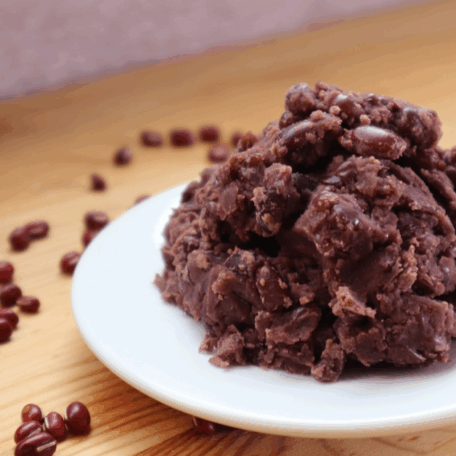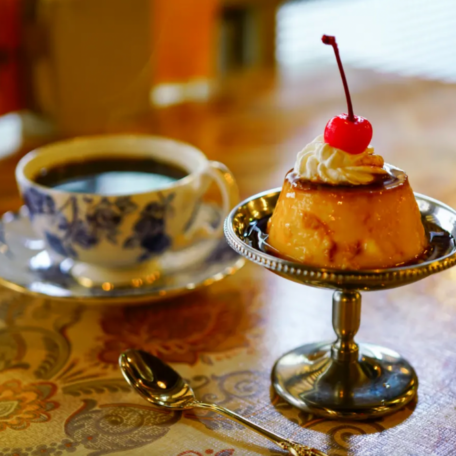Summer’s Best: Refreshing with Kuzumochi
Aug 20, 2022
BY Stanley Clark

Aside from visiting cultural sites, one of the best things you can do in Japan is to uncover new places to eat and try out local delicacies. In Japan, seasonal changes have a significant impact on culinary offerings. For instance, several foods are only available during a specific season.
Kuzumochi is a kuzuko-based mocha cake. On the other hand, kuzuko is a starch powder derived from the root of the kudzu plant. In some cases, restaurants serve the refreshing delicacy cold and drizzled with sugar syrup known as “black honey” or kuromitsu.
What is Kuzumochi?
Kuzumochi is a light Japanese delicacy prepared with starchy kuzuko powder. This pure, natural powder derives from the kuzu plant and is a common thickening ingredient in Japan.
You can easily dissolve kuzuko powder in sweetened water to form kuzumochi, which is then poured into molds and left to set.
The mild flavour and gelatinous texture of kuzumochi make it the ideal summertime dessert. Confectioners usually serve this summer snack chilled with brown sugar syrup and coated with powdered roasted soybeans.
Discovering Kuzumochi
Some people believe that kuzumochi was an accidental discovery more than 150 years ago in the vicinity of Kawasaki Daishi temple.
The story may have begun when a certain Mr. Kyubei found a misplaced barrel of rain-damaged wheat flour. While discarding the gluten, he experimented with the transformed starch to make a mochi-like confection. He then gave the cake to the temple’s chief priest for review. The priest approved of the new magical product. He gave it the name “kuzumochi,” adding the auspicious character ju (zu), which means “long life”, to the Ku, the mochi inventor’s name.
The accidental finding of this Japanese summer delicacy is a relatively well-known tale. However, the opening of an Ajinomoto factory for the manufacture of monosodium glutamate (umami) in 1914 may be more responsible for kuzumochi’s popularity.
The factory’s inception may also have to do with the long-standing close connection with the neighbourhood surrounding the Kawasaki Daishi temple.
Today, there are many small-scale kuzumochi producers with cafes in Japan, all vying for customers, especially during the heat of summer.

Photo from jw-webmagazine.com
More Japanese Summer Desserts
In Japan, summer is a period of festivals and fireworks that is jam-packed with fun. Almost every night, fireworks show light up the night sky.There are also many summer cleansing rituals to take part in around Tokyo.
However, it can get hot in Japan throughout the summer. To savour and cool down, you may check out these delectable Japanese summer treats:
- Uiro: This dish is a rice flour and sugar-based traditional Japanese steamed cake. Its texture is comparable to mocha.
People usually prefer strawberry, chestnut, matcha (green tea), and yuzu (a citrus indigenous to East Asia) flavours.
- Anmitsu: This delicacy derives from tiny red algae-based agar jelly cubes. Fruit juice is typically the primary ingredient in making the jelly.
Moreover, food shops may serve anmitsu with sweet azuki, boiling peas, bean paste, and other seasonal fruits.
- Kakigori: This treat is a Japanese shaved ice dessert different from snow cones because it uses syrup and condensed milk.
Like the freshly fallen snow, the ice in kakigori is fluffier and smoother than the standard ones, making it preferable to consume with a spoon instead of straight from the paper cone.

- Mochi Ice Cream: This delicious delicacy has a golf ball-like shape and size. It has an ice cream layer inside and a mochi outer layer.
Its flavours range from matcha (ground green tea) to vanilla. - Chirin-Chirin: This ice cream is light and cooling, comparable to sorbet, and the ideal dessert for summer. Chirin-chirin’s name is also an imitation of the brass bell that ice cream cart merchants ring to draw customers.
There are many flavours of chirin-chirin, but customers typically prefer vanilla. Moreover, this ice cream’s rose petal shape is what distinguishes it from other sweets.

Credit: Pexel
Summer Specials
Here are some additional features of a Japanese summer:
- Wind Chimes: You can see these percussion devices hanging everywhere from the windows of homes, businesses, and temples.
Wind chimes generate a simple and beautiful melody, heralding the advent of the cool breeze that the Japanese people long for in the summer.
- Teru Teru Bozu: Young kids display this handmade doll on window sills. As summer showers are common in Japan, it serves as a mascot to guarantee that the following day will be sunny.
- Lotuses: In the summer, lotuses are also in full flower, which is a perfect excuse to search for all the locations with lotus ponds.
- Cicadas: The buzzing of cicadas on tree branches, in towns, and the countryside, provides the perfect soundtrack of a Japanese summer. Pay attention to their distinctive sound – you can’t help but notice it.
Summer is full of delicious cool desserts and dishes so make sure to add them to your list for your next trip!
Featured photo from https://koredesuka.wordpress.com/2014/12/23/ishinabe-kuzumoch-ten-traditional-japanese-sweets/
Join us on our Limited Edition Summer online experience in Japan to learn more about things to do and eat!
PIN THIS FOR LATER
Book your pocket wifi now to stay connected through your entire Japan Journey!

Be sure to get the JR Pass to make navigating Japan during your trip that much easier!

YOU MIGHT ALSO LIKE





